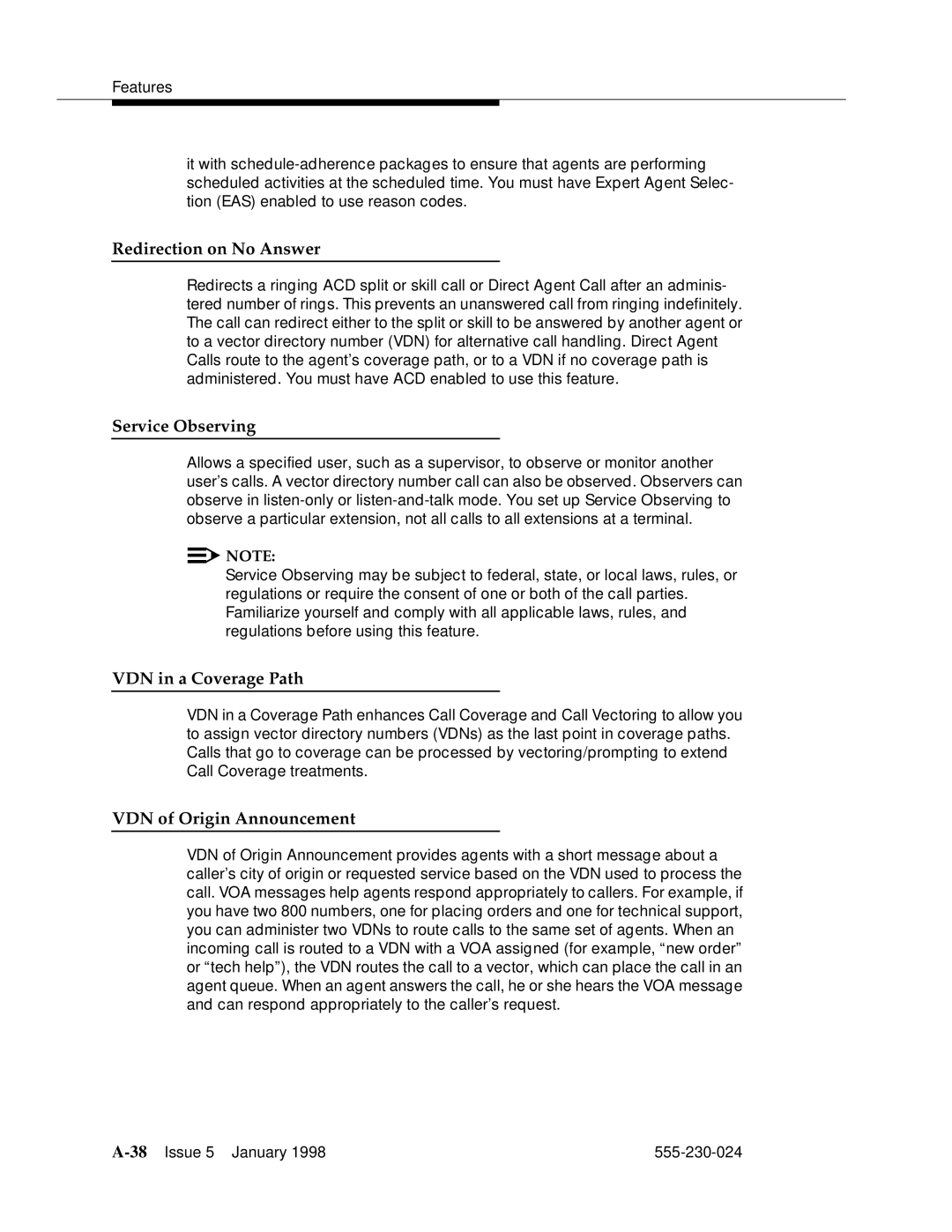
Features
it with
Redirection on No Answer
Redirects a ringing ACD split or skill call or Direct Agent Call after an adminis- tered number of rings. This prevents an unanswered call from ringing indefinitely. The call can redirect either to the split or skill to be answered by another agent or to a vector directory number (VDN) for alternative call handling. Direct Agent Calls route to the agent’s coverage path, or to a VDN if no coverage path is administered. You must have ACD enabled to use this feature.
Service Observing
Allows a specified user, such as a supervisor, to observe or monitor another user’s calls. A vector directory number call can also be observed. Observers can observe in
![]()
![]() NOTE:
NOTE:
Service Observing may be subject to federal, state, or local laws, rules, or regulations or require the consent of one or both of the call parties. Familiarize yourself and comply with all applicable laws, rules, and regulations before using this feature.
VDN in a Coverage Path
VDN in a Coverage Path enhances Call Coverage and Call Vectoring to allow you to assign vector directory numbers (VDNs) as the last point in coverage paths. Calls that go to coverage can be processed by vectoring/prompting to extend Call Coverage treatments.
VDN of Origin Announcement
VDN of Origin Announcement provides agents with a short message about a caller’s city of origin or requested service based on the VDN used to process the call. VOA messages help agents respond appropriately to callers. For example, if you have two 800 numbers, one for placing orders and one for technical support, you can administer two VDNs to route calls to the same set of agents. When an incoming call is routed to a VDN with a VOA assigned (for example, “new order” or “tech help”), the VDN routes the call to a vector, which can place the call in an agent queue. When an agent answers the call, he or she hears the VOA message and can respond appropriately to the caller’s request.
